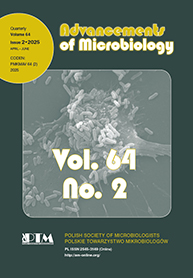Abstract: The two-component NarLX signaling system is a key mechanism for bacterial adaptation to changing environmental conditions. Composed of a histidine kinase (NarX) and a response regulator (NarL), it enables bacteria to accurately detect and respond to environmental changes, particularly in nitrate and nitrite concentrations.
Studies on various bacterial species, including Escherichia coli, Salmonella enterica serovar Typhimurium and Pseudomonas aeruginosa, have shown that the NarLX system plays a fundamental role in anaerobic metabolism, biofilm formation, colonization ability and virulence. In E. coli, the system activates 51 operons and inhibits 41 of them, while in other species it affects key survival processes.
In the context of increasing antibiotic resistance, the NarLX system represents a promising therapeutic target. Potential strategies include the development of small-molecule inhibitors that could precisely modulate bacterial behavior without destroying the bacterial flora.
The research points to the possibility of developing innovative methods to combat bacterial infections, offering an alternative to traditional antibiotics and minimizing the risk of increasing bacterial resistance.
9 July 2025

